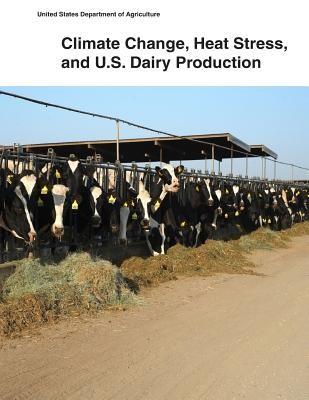
- We will send in 10–14 business days.
- Author: United States Department of Agriculture
- Publisher: CreateSpace Independent Publishing Platform
- Year: 2014
- Pages: 44
- ISBN-10: 150539855X
- ISBN-13: 9781505398557
- Format: 21.6 x 28 x 0.2 cm, softcover
- Language: English
- SAVE -10% with code: EXTRA
Climate Change, Heat Stress, and U.S. Dairy Production (e-book) (used book) | bookbook.eu
Reviews
Description
In the United States, climate change is likely to increase average daily temperatures and the frequency of heat waves, which can reduce meat and milk production in animals. Methods that livestock producers use to mitigate thermal stress-including modifica-tions to animal management or housing-tend to increase production costs and capital expenditures. Dairy cows are particularly sensitive to heat stress, and the dairy sector has been estimated to bear over half of the costs of current heat stress to the livestock industry. In this report, we use operation-level economic data coupled with finely scaled climate data to estimate how the local thermal environment affects U.S. dairies' effec-tiveness at producing outputs with a given level of inputs. We use this information to estimate the potential decline in milk production in 2030 resulting from climate change-induced heat stress. For four climate model scenarios, the results indicate modest heat stress-related production declines over the next 20 years, with the largest declines occur-ring in the South.
EXTRA 10 % discount with code: EXTRA
The promotion ends in 18d.13:47:42
The discount code is valid when purchasing from 10 €. Discounts do not stack.
- Author: United States Department of Agriculture
- Publisher: CreateSpace Independent Publishing Platform
- Year: 2014
- Pages: 44
- ISBN-10: 150539855X
- ISBN-13: 9781505398557
- Format: 21.6 x 28 x 0.2 cm, softcover
- Language: English English
In the United States, climate change is likely to increase average daily temperatures and the frequency of heat waves, which can reduce meat and milk production in animals. Methods that livestock producers use to mitigate thermal stress-including modifica-tions to animal management or housing-tend to increase production costs and capital expenditures. Dairy cows are particularly sensitive to heat stress, and the dairy sector has been estimated to bear over half of the costs of current heat stress to the livestock industry. In this report, we use operation-level economic data coupled with finely scaled climate data to estimate how the local thermal environment affects U.S. dairies' effec-tiveness at producing outputs with a given level of inputs. We use this information to estimate the potential decline in milk production in 2030 resulting from climate change-induced heat stress. For four climate model scenarios, the results indicate modest heat stress-related production declines over the next 20 years, with the largest declines occur-ring in the South.


Reviews